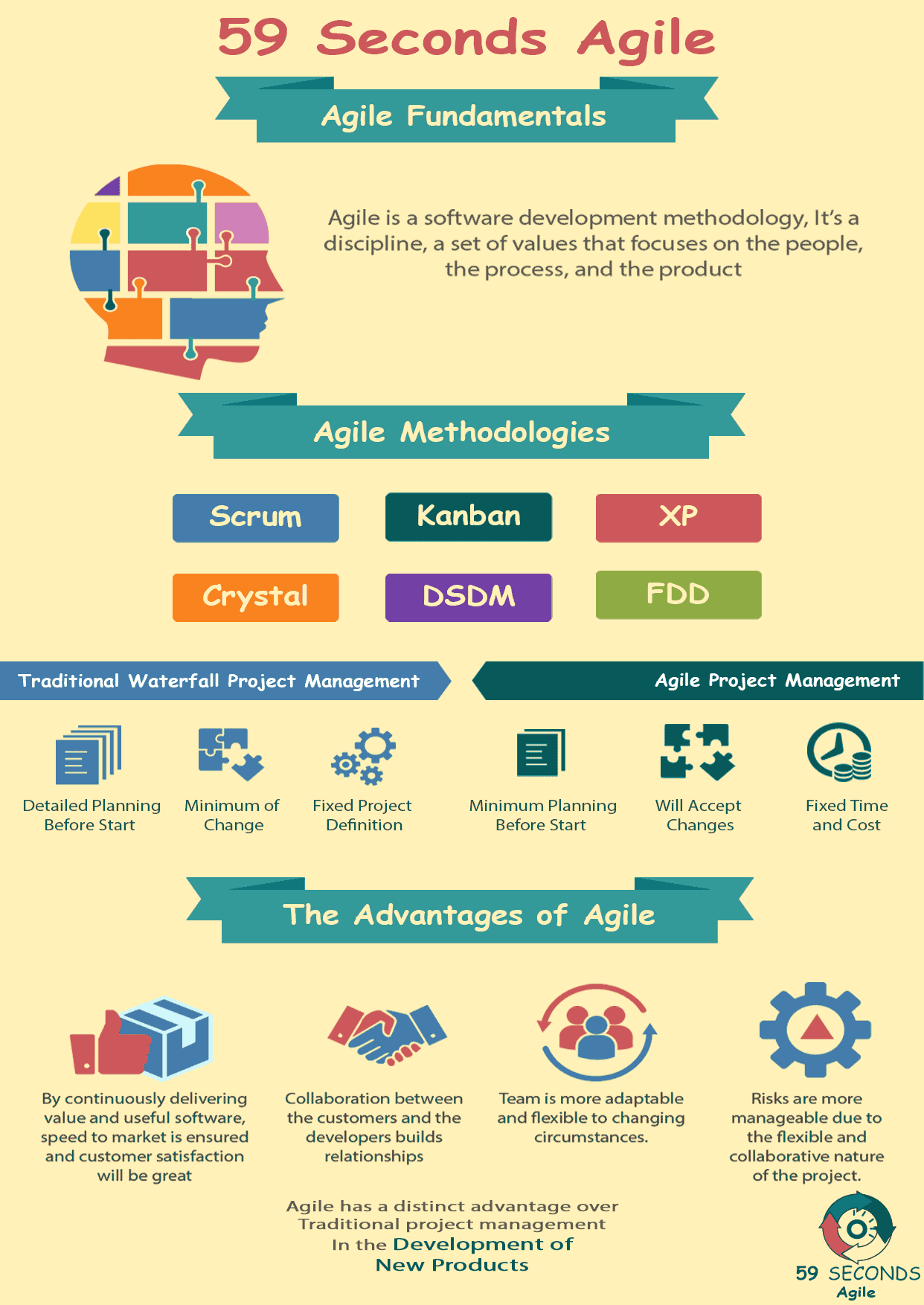Welcome to the Agile Development Fundamentals Video And Starter Kit article where we will be looking at the Agile Manifesto and the 4 key Agile values.
The Agile Fundamentals
A 59 Seconds Agile Video Animation
The Agile Fundamentals for Developers
A 59 Seconds Agile Article
Agile software development is a collection of many different ideas and practices. The basic documentation for Agile consists of the Agile Manifesto and Agile Principles. Between the 4 values of the Manifesto and the 12 principles, Agile is a theory. Putting it into practice is more complicated. The theory doesn’t always translate directly to business practices. There are some fundamentals to Agile that are difficult to understand from the Manifesto and principles alone.
The best way to describe Agile software development is to compare it to traditional waterfall development. Much of software development is the same, no matter what project management method is used. However, the differences are what make Agile unique. Many of these differences apply specifically to the developer role. As such, developers must understand how their duties differ between traditional and Agile software development.
Agile Development Fundamentals: Similarities to Traditional Development
Communication is required in any project, software application development included. Development teams consist of several members, and these roles must interact with each other. Good communication ensures that everyone is on the same page, and development doesn’t experience setbacks due to misunderstandings. As the primary creators of code, developers must be able to adequately discuss requests. In the other direction, they must be able to communicate setbacks and problems with development during the project.
Another form of communication in software development involves dealing with customers and stakeholders. Customers are the driving force behind a software project. They are the reason a project begins, and they decide what features a product should have. The development team must also keep customers informed about the status of a project. If there are setbacks, these must be announced in some way. Nobody wants to hear that their product is behind schedule, but it is better to know than to expect it and receive nothing.
Agile Development Fundamentals: Early Delivery
Software development takes time, and early delivery often yields an advantage. As the adage goes, the early bird gets the worm. Software products that hit the market first have a reputation. Any similar products that come out later are often seen as imitators. At the same time, it is important to release a quality product. If the first product released is buggy and the second product is fully tested and fixed, the first product may never be able to recover from the bad publicity.
In addition to a market advantage, releasing working software opens the door for customer feedback. Customers can see concept art and demonstration videos, but they cannot know the software fully until they use it themselves. What looks right on paper may not feel right when putting into practice. By getting software into the hands of users, customers have the opportunity to say what they like and what they don’t like.
Software should meet the needs of customers, but there is always room for enhancement. As good as a product may be, it is never perfect. There may be features that would improve the product if added, and nearly any software could benefit from performance optimization. Until a product reaches the end of life, the developers should always evaluate how it can be made better.
Customer Communication
Customers must communicate their needs to the development team. Developers cannot read minds, so customers must be given written and often verbal explanations of requirements. In contracted projects, customers must be as specific as possible in order to give a proper image of what they want. Once requirements are set in stone, they can be difficult to change.
Any software project will take some amount of time to develop. This time will vary based on the size and complexity of the product, and how much customers want out of it. The developers must use this time to create a product that the customer needs. Since customer requests drive development, the customer’s satisfaction is the top priority of a development team.
Prev <— Continue Reading —> Next
User Stories Applied
A 59 Seconds Agile Book Review
User Stories Applied by Mike Cohn is one of our favourite books on Agile User Stories. The book starts with an overview into user stories, and details what a user story is and the different aspects of them. He then discusses how to go about writing a user story, and provides details of the INVEST criteria that can be used to determine if the story is meeting all of its objectives. Next Mike gives an in depth discussion of who user stories are written for and where to begin when gathering the details for them. The book then discusses acceptance testing user stories, including how to go about specifying these criteria and the responsibilities of the development team and customers during this process.
Prev <— Continue Reading —> Next
Learn More
Agile Project Management Training Courses
Agile Fundamentals
A 59 Seconds Agile Infographic

Prev <— Continue Reading —> Next
Our Favourite Agile Books
We found these books great for finding out more information on Agile Scrum:

